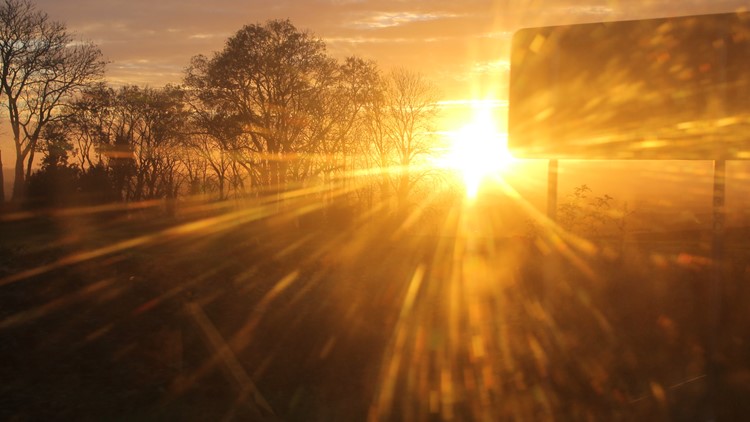CLEAR CREEK COUNTY, Colo. — Anytime you’re driving east in the morning, you have to contend with the rising sun. But on Interstate 70 at Floyd Hill, that sun glare gets extra dangerous because of the angle and the position of the road.
“This one is probably one of the worst ones I’ve ever seen when it hits its peak," said Colorado State Trooper Gary Cutler. "You just lose complete ability to see what’s in front of you because of that sun glare that’s coming in.”
Cutler said the State Patrol and the Colorado Department of Transportation (CDOT) have developed a sun glare protocol, which they say allows them to react to dangerous sun glare conditions and shut down I-70 eastbound quicker than ever before.
The protocol includes monitoring web cameras, positioning troopers strategically when possible, and alerting commuters with electronic road signs, text alerts, and the COTrip.org website.
Cutler said the sun glare protocol is most likely to be used from Nov. 1 through Jan. 31, between the hours of 7:30 and 8:30 in the morning.
Sun glare closures usually last between 45 minutes and an hour.
The science behind our sun glare season
The sun rises at different points on the horizon and takes a different route across the sky every day.
On the Fall Equinox, the sun comes up at exactly due east. That was Sept. 23 this season.
I-70 faces slightly southeast at Floyd Hill, so the sun came up behind the hills at that point in the year.
After the Fall Equinox, the sun rises just a little bit further to the south every day until the Winter Solstice. That is when the I-70 sun glare season hits its peak.
That path dragged the dangerous sun glare across I-70 from about early November to Dec. 21.
But then after the solstice, the sunrise will start to work it's way back to the north until the spring equinox. That means the sun glare issue continues on until early February.
Another factor is the sun angle.
In the summer, the sun takes a high angled route across the sky, so it appears to go straight up. In the winter months, it takes a lower angled route. That keeps it in a blinding position for a longer period of time.
Frequent glare closures this winter
There have been more sun glare closures this winter on I-70 however, CDOT was not sure about the exact numbers at the time this article was posted.
One explanation could be an unusually high number of clear mornings this winter. Cloud cover records are no longer kept by the National Weather Service, but the clear morning skies have been noticeable.
The state patrol also said they are now taking a more organized approach to the closures with the new protocol. That would explain the high amount of closures this winter, and they also said to expect more closures in future winters.
Daylight Saving
If Colorado were to join the states that do not practice Daylight Saving Time, this sun glare issue would still impact the same place at the same time.
That is because we would likely use Standard Time for the whole year, which means the winter hours would not be changed, just summer hours.
SUGGESTED VIDEOS | Science is Cool



